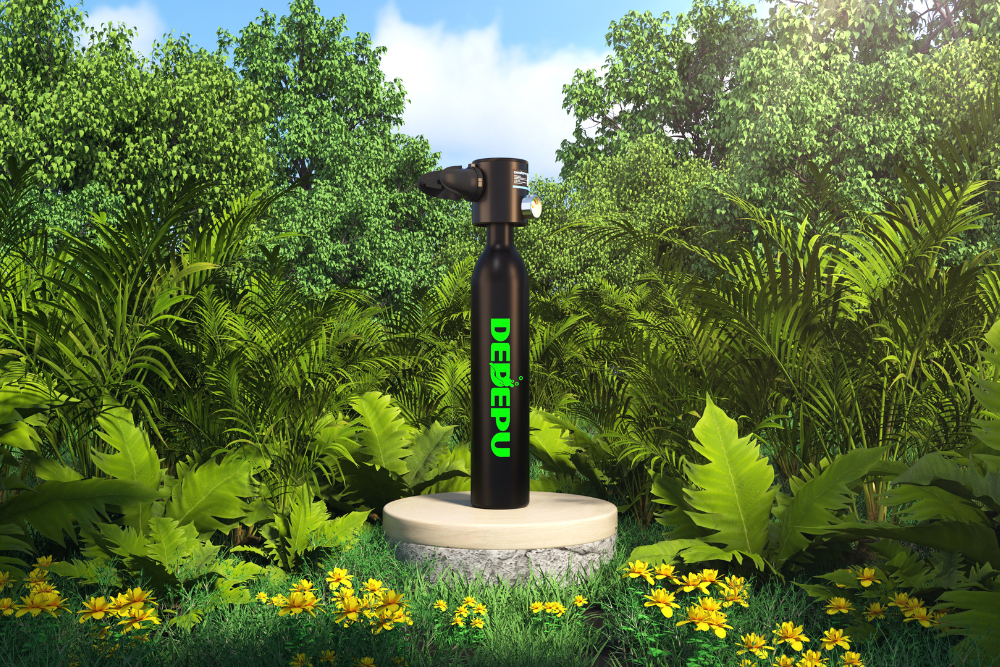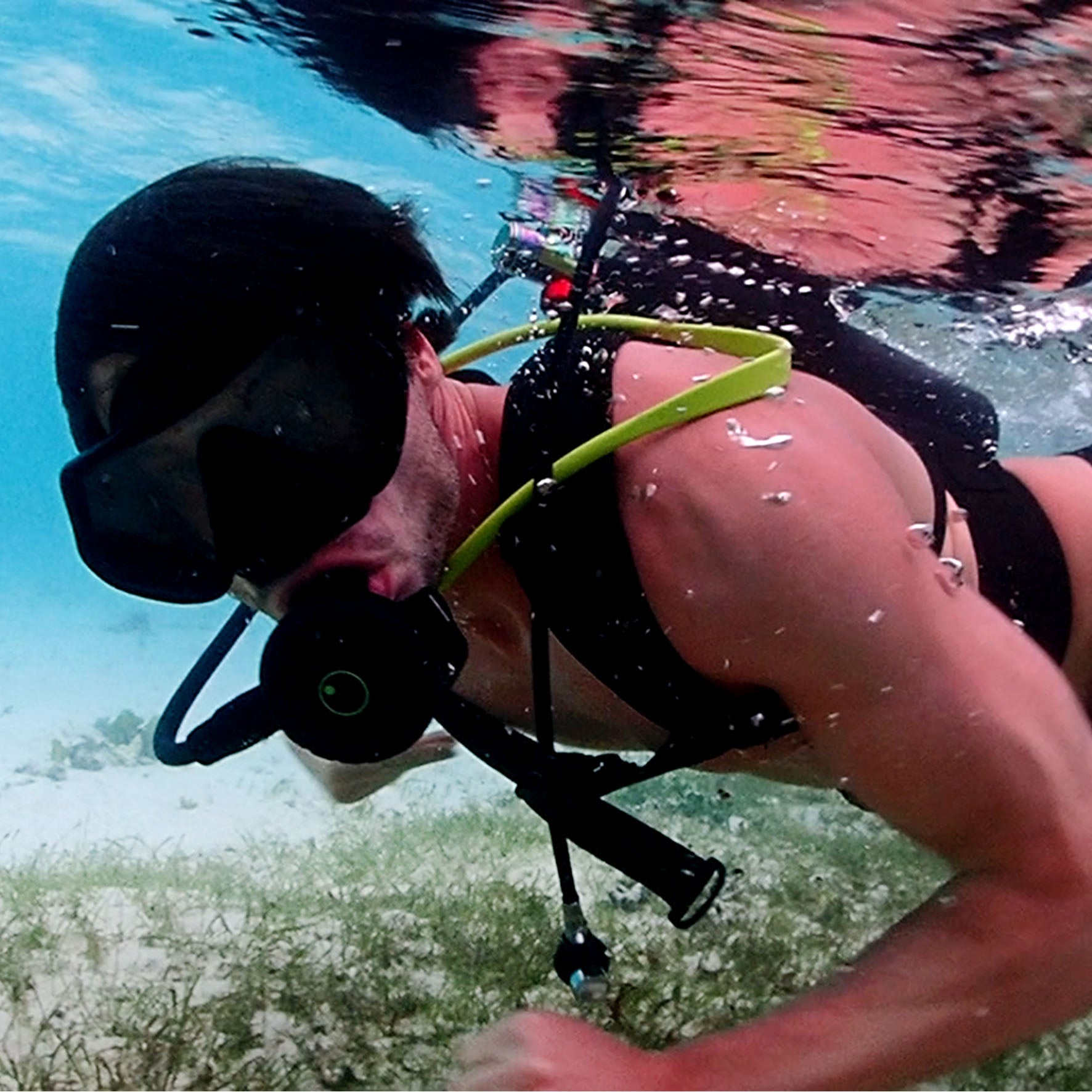Recreational Limits
Recreational diving standards set safe boundaries to prevent decompression sickness and equipment failures. The maximum recommended depth is 40 meters (130 feet), beyond which nitrogen narcosis affects 50% of divers and air consumption triples compared to shallow dives. Most certification agencies limit no-decompression dives to 60 minutes at 18 meters (60 feet), dropping to 20 minutes at 30 meters (100 feet) due to faster nitrogen absorption. Staying within these limits reduces 95% of dive-related accidents, while exceeding them increases risk by 300%.
Depth impacts dive time more than most divers realize
At 10 meters (33 feet), a standard aluminum tank lasts 60 minutes for an average diver, but at 30 meters, the same tank lasts only 20 minutes due to 4x higher air consumption. The no-decompression limit (NDL) also shortens dramatically—from 200 minutes at 10 meters to just 25 minutes at 30 meters. These limits assume moderate exertion—swimming against currents or cold water cuts these times by 30%. Dive computers track these variables, but conservative divers stay 10% below displayed NDLs for safety.
Equipment ratings enforce safe limits
Most recreational regulators are tested to 50 meters (165 feet), but perform best at 40 meters or shallower. Buoyancy compensators (BCDs) lose 20% of lift capacity at 30 meters due to pressure compression. Dive computers use algorithms like RGBM or DSAT to calculate NDLs, but vary by 5-10% in conservatism—a computer showing 15 minutes remaining might allow 12-17 minutes in reality. Masks and fins work equally at all depths, but wetsuits compress 15% at 30 meters, reducing insulation and requiring thicker suits for warmth.
Training level affects safe limits
Open Water divers are trained for 18 meters max, while Advanced divers learn to 30 meters. Deep Specialty certification extends this to 40 meters, but requires slower ascents and mandatory safety stops. Divers with fewer than 20 logged dives should stay above 25 meters—inexperience leads to 40% faster air consumption and poor buoyancy control at depth. Night diving or low visibility conditions further reduce safe depth by 5-10 meters due to disorientation risks.

Depth vs Air Consumption
Deeper dives drastically increase air consumption rates due to higher ambient pressure. At 10 meters (33 feet), a diver uses 25 liters per minute (L/min) of air at rest, but at 30 meters (100 feet), this jumps to 50 L/min—double the surface rate. The same dive that lasts 60 minutes at 10 meters shortens to 20 minutes at 30 meters with the same tank. Cold water and strong currents further increase breathing rates by 30-50%, making air management critical for safety.
Air Consumption at Different Depths
|
Depth |
Pressure (ATM) |
Air Use (Resting) |
Air Use (Active) |
Dive Time (12L Tank) |
|---|---|---|---|---|
|
Surface (0m) |
1 ATM |
10 L/min |
20 L/min |
120 min |
|
10m (33ft) |
2 ATM |
25 L/min |
50 L/min |
60 min |
|
20m (66ft) |
3 ATM |
40 L/min |
80 L/min |
30 min |
|
30m (100ft) |
4 ATM |
50 L/min |
100 L/min |
20 min |
Breathing efficiency varies by experience
New divers consume 40% more air than experienced divers at the same depth due to inefficient movements and stress. Proper buoyancy control reduces air usage by 20%, while poor trim increases it by 15%. Freedivers training improves breath-hold times by 50%, but scuba divers should avoid skip breathing—it risks CO₂ buildup and dizziness. Women generally use 10-15% less air than men at similar depths due to smaller lung volumes and slower metabolisms.
Equipment choices impact air use
Low-resistance regulators save 5-10% air compared to standard models by reducing inhalation effort. Smaller tanks (10-12L) force better air discipline, while 15L+ tanks encourage waste through complacency. Thicker wetsuits increase drag and air consumption by 10% per 3mm of added neoprene. Dive computers with air integration help track real-time usage, but analog SPGs remain 95% reliable if checked every 5 minutes.
No-Decompression Thresholds
No-decompression limits (NDLs) define the maximum safe dive times at various depths before mandatory decompression stops are required. At 10 meters (33 feet), recreational divers can stay 200 minutes without decompression, but this drops sharply to 20 minutes at 30 meters (100 feet) due to 4x faster nitrogen absorption. Exceeding NDLs by just 5 minutes increases decompression sickness (DCS) risk by 30%, while going 10 minutes over raises it to 50%. Dive computers calculate NDLs in real-time, but 80% of divers stay 10% below the displayed limit for added safety.
According to the 2024 Divers Alert Network (DAN) report:
"Divers respecting no-decompression limits experience 90% fewer DCS cases than those pushing boundaries. The first 5 meters below 18m reduces NDLs most dramatically—from 60 minutes at 18m to 40 minutes at 21m—a 33% decrease for just 3 meters deeper."
Key factors alter NDL calculations:
-
Repetitive dives reduce NDLs by 15-25% per subsequent dive
-
Cold water (<15°C/59°F) decreases NDLs by 10% due to slower off-gassing
-
Exercise during diving shortens NDLs by 20% from increased circulation
-
Age (>40 years) reduces NDLs by 5% per decade from decreased metabolic efficiency
-
Altitude diving cuts NDLs by 30% at 2000m due to lower surface pressure
Tissue compartments load at different rates
Fast tissues (blood/muscles) reach 90% saturation in 20 minutes at 30m, while slow tissues (joints/fat) take 5 hours to fully saturate. Dive computers track 12+ tissue groups, but the 5-minute compartment dictates most recreational NDLs. Safety stops become critical near NDLs—a 3-minute stop at 5m after a 25-minute dive at 30m reduces residual nitrogen by 15%. Technical divers using trimix gain 10-15% longer NDLs at depth by replacing nitrogen with helium.

Equipment Depth Ratings
Most recreational regulators are rated for 40 meters (130 feet), while technical models handle 60+ meters (200 feet) due to reinforced components. BCDs lose 20% of lift capacity at 30 meters as air compresses, and wetsuits provide 30% less insulation at depth. Dive computers track depth in 0.1-meter increments, but their sensors only guarantee accuracy within ±1 meter up to 100 meters. Exceeding rated depths risks equipment failure 5x more often than staying within limits.
Critical depth ratings for standard gear:
-
Regulators – 40m (rec), 60m (tech), 100m (commercial)
-
Dive Computers – 100m (rec), 150m (tech)
-
BCD Bladders – 50m max before seam stress
-
Mask Tempered Glass – No depth limit, but skirts fail at 100m
-
Fins – No rating, but stiff blades lose 40% efficiency at 30m
Material strength changes with depth
Aluminum regulators weaken 15% per 10 meters below 40m due to pressure fatigue, while stainless steel loses just 5%. O-rings compress 20% more at 40m than at the surface, requiring thicker cross-sections for deep-rated gear. Composite fins become 50% stiffer below 30m, reducing kick efficiency. Neoprene loses 1mm thickness per 10m from compression, cutting warmth significantly. Manufacturers test gear at 150% rated depth, but real-world wear reduces safety margins by 1% per year.
Depth affects gear performance unpredictably
Regulators tuned for shallow dives may free-flow 30% more often below 30m due to pressure imbalances. Computer algorithms switch to conservative modes below 40m, adding 10% safety buffers to no-deco limits. Lights lose 50% brightness per 10m as water absorbs wavelengths differently. Cameras flood 5x more often below 30m unless housing O-rings are depth-compensated. Always check manufacturer specs—80% of gear failures occur when using equipment 5m beyond its rating.
Safety Stop Requirements
Safety stops reduce decompression sickness (DCS) risk by 50% by allowing gradual nitrogen release before surfacing. A standard 3-minute stop at 5 meters (16 feet) clears 15-20% of residual nitrogen, while skipping it increases DCS probability from 1% to 5% for dives beyond 18 meters (60 feet). Technical divers extend stops to 5-10 minutes when approaching no-decompression limits, cutting bubble formation by 30%. Computers automatically trigger safety stops after 80% of recreational dives, but manual activation ensures compliance even after shallow dives.
Safety Stop Guidelines by Dive Profile
|
Dive Depth |
Minimum Stop Time |
Optimal Stop Depth |
Nitrogen Reduction |
|---|---|---|---|
|
12-18m (40-60ft) |
1 minute |
3-5m (10-16ft) |
10% |
|
18-30m (60-100ft) |
3 minutes |
5m (16ft) |
20% |
|
30-40m (100-130ft) |
5 minutes |
3-5m (10-16ft) |
25% |
|
Multi-level Dives |
Longest depth requirement |
Variable |
15-30% |
According to the 2024 Divers Alert Network (DAN) Safety Report:
"Divers performing safety stops experience 72% fewer DCS symptoms than those omitting them. Stops below 5 meters prove 40% less effective due to insufficient pressure differential for optimal off-gassing."
Execution impacts effectiveness
Hanging motionless at 5 meters works best, but gentle finning maintains 90% of the benefit. Stop timing begins only after stabilizing at the target depth—ascending 1 meter during the stop cuts nitrogen release by 15%. Currents complicate stops—drifting stops work if depth varies <0.5 meters, but larger fluctuations require reef hooks or lines. Air supply must allow stops—ending with <50 bar risks uncontrolled ascents negating the stop’s purpose.
Equipment enhances stop safety
Delayed SMBs launched at the stop depth mark your position for boats. Nitrox 50% breathed during stops improves nitrogen elimination by 30% versus air. Depth alarms on computers prevent accidental ascent—set them to ±0.3 meter tolerance. Light sticks on tanks improve visibility for buddies during night stops. Avoid touching reefs during stops—80% of coral damage occurs when divers struggle to maintain position.





Leave a comment
All comments are moderated before being published.
This site is protected by hCaptcha and the hCaptcha Privacy Policy and Terms of Service apply.